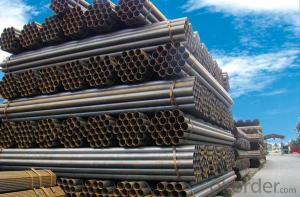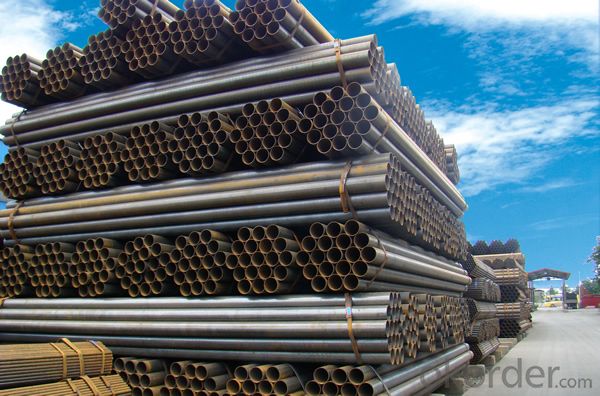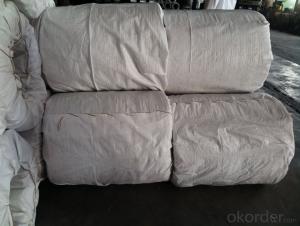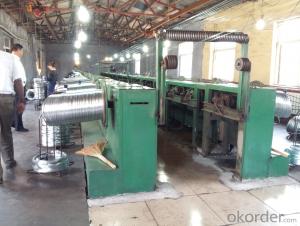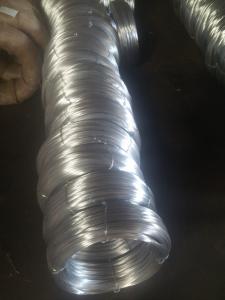Hot Dipped Galvanized Steel Pipe
- Loading Port:
- Qingdao
- Payment Terms:
- TT OR LC
- Min Order Qty:
- 3000 PCS
- Supply Capability:
- 40000 PCS/month
OKorder Service Pledge
OKorder Financial Service
You Might Also Like
Hot Dipped Galvanized Steel Pipe Details
| Thickness: | 1.5 - 20 mm | Section Shape: | Round | Outer Diameter: | 10 - 750 mm |
| Place of Origin: | Tianjin China (Mainland) | Secondary Or Not: | Non-secondary | Application: | Structure Pipe |
| Technique: | Hot Rolled | Certification: | BSI | Surface Treatment: | Galvanized |
| Alloy Or Not: | Non-alloy | Length: | 1m~12m | Plastic caps: | with plastic caps on both ends or not |
| Coupling: | with coupling or socket or not | Thread type: | ASTM OR BRITISH | Description: | hot dipped galvanized steel pipe |
| Weight: | 2~5 ton per bundle | Produce standard: | BS1387 or GB or ASTM | Shape: | round, square, rectangular |
Packaging & Delivery
| Packaging Detail: | wrapped by steel strips in bundles and covered by plastic bags . |
| Delivery Detail: | as per the quantity |
Hot Dipped Galvanized Steel Pipe Specifications
Product Name: | BS1387 /ASTM A53 Galvanized Steel Pipe | |
Size | OD | 1/2-8” (20mm-219mm) |
Wall Thickness | 0.5mm-10mm SCH30,SCH40,STD,XS,SCH80,SCH160,XXS etc. | |
Length | Less than 12m | |
Steel material | Q195 → Grade B, SS330,SPHC, S185 Q215 → Grade C,CS Type B,SS330, SPHC Q235 → Grade D,SS400,S235JR,S235JO,S235J2 Q345 → SS500,ST52 | |
Standard | BS EN10296,BS EN10025,BS EN10297,BS6323, BSEN10219,BSEN10217,GB/T13793-1992,GB/T14291-2006 GB/T3091-1993,GB/T3092-1993,GB3640-88 | |
Usage | Used For Structure, Accessorize And Construction | |
Ends | 1) Plain 2) Beveled 3) Thread with Coupling or cap | |
End protector | 1) Plastic pipe cap 2) Iron protector | |
Surface Treatment | 1) Bared 2) Black Painted (varnish coating) 3) Galvanized 4) With Oiled 5) 3 PE, FBE, corrosion resistant coating | |
Technique | Electronic Resistance Welded (ERW ) Electronic Fusion Welded (EFW) Double Submerged Arc Welded (DSAW) | |
Type | Welded Pipe | |
Welded Line Type | Longitudinal | |
Section Shape | Round | |
Inspection | With Hydraulic Testing, Eddy Current , Infrared Test | |
Package | 1) Bundle, 2) In Bulk 3) Bags 4) Clients' Requirements | |
Delivery | 1) Container 2) Bulk carrier | |
Port of Shipment | Xingang Port,Tianjin, China | |
Date of Delivery | According To The Quantity And Specification Of Each Order | |
Payment | L/C T/T | |
Others | Fitting as screws and flange also can be supplied. | |
Hot Dipped Galvanized Steel Pipe Advantages
Professional advantage:
More than 10 years’ professional producing experience.
Price advantage:
We are manufacturer and we have our own factory, you can get a competitive price with high quality.
Service advantage:
Your enquiry will get quickest and most efficient response. We can provide samples for your evaluation as well as fastest delivery.
Honor advantage:
Good reputation in this industry due to our high quality products and service.
Hot Dipped Galvanized Steel Pipe Pictures
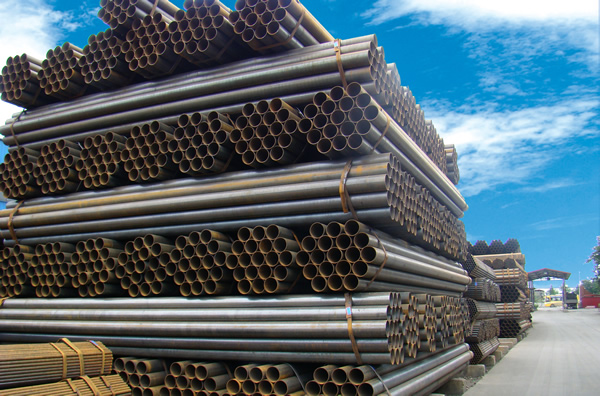
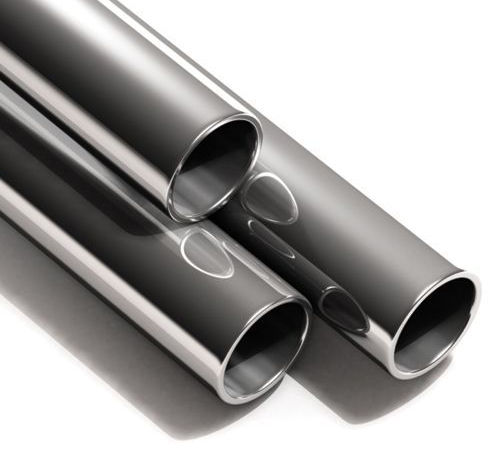

- Q: Can steel pipes be used for the construction of high-rise buildings?
- Yes, steel pipes can be used for the construction of high-rise buildings. Steel pipes offer several advantages such as high strength, durability, and resistance to fire, making them a suitable choice for supporting the structural load and ensuring the stability of tall structures. Additionally, steel pipes can be easily fabricated and installed, providing flexibility in design and construction.
- Q: How are steel pipes tested for quality?
- Steel pipes are tested for quality through various methods such as visual inspections, dimensional measurements, and various mechanical and chemical tests. These tests include assessing the pipe's surface finish, checking for any defects or cracks, measuring its dimensions, conducting tensile and impact tests, and analyzing its composition. Additionally, non-destructive testing techniques like ultrasonic testing, radiography, and magnetic particle inspection are employed to ensure the pipes meet the required quality standards.
- Q: What are the different methods of pressure testing steel pipes?
- There are several different methods of pressure testing steel pipes, including hydrostatic testing, pneumatic testing, and ultrasonic testing. Hydrostatic testing involves filling the pipe with water and pressurizing it to a specified level to check for leaks or weaknesses. Pneumatic testing is similar but uses compressed air or gas instead of water. Ultrasonic testing involves using high-frequency sound waves to detect any defects or flaws in the pipe. Each method has its own advantages and is chosen based on the specific requirements and industry standards.
- Q: How are steel pipes used in the manufacturing of chemical processing plants?
- Steel pipes are commonly used in chemical processing plants for various purposes such as transporting fluids, gases, and chemicals within the facility. They are utilized for the safe and efficient transfer of raw materials, intermediate products, and final products throughout different stages of the manufacturing process. Steel pipes provide excellent strength, durability, and resistance to corrosion, making them suitable for handling corrosive materials and operating under high pressure and temperature conditions. Additionally, steel pipes can be welded and connected easily, allowing for customized configurations and efficient installation in chemical processing plants.
- Q: How are steel pipes protected against seismic activities?
- Steel pipes can be protected against seismic activities through various measures such as using flexible joints, employing seismic bracing systems, and implementing proper installation techniques. Additionally, coating the pipes with corrosion-resistant materials and conducting regular inspections and maintenance can further enhance their protection against seismic events.
- Q: What is the difference between steel pipe and HDPE pipe?
- Steel pipe and HDPE pipe have different compositions and characteristics, making them suitable for various applications. Steel pipe, made of steel, is a robust and durable material commonly used in industrial and infrastructure projects that require strength and reliability. It can withstand high pressure, temperature, and heavy loads, and is resistant to corrosion for both above-ground and underground installations. On the other hand, HDPE pipe is composed of high-density polyethylene, a plastic polymer. These pipes are lightweight, flexible, and easy to install, making them ideal for water supply, drainage systems, and agricultural irrigation. They are resistant to chemicals, abrasion, and UV rays, making them suitable for indoor and outdoor use. HDPE pipes also have a long service life and require low maintenance. In terms of cost, steel pipes are generally more expensive due to the raw materials and manufacturing process involved. However, they are chosen for their superior strength and durability in applications with high pressure or extreme conditions. HDPE pipes offer a cost-effective solution for applications that don't require the same level of strength and durability. In summary, the differences between steel pipe and HDPE pipe lie in their composition, strength, durability, and cost. Steel pipe is known for its strength and reliability, while HDPE pipe offers flexibility, easy installation, and resistance to chemicals and UV rays. The choice between the two depends on the specific application and project requirements.
- Q: Are steel pipes suitable for underground gas lines?
- Indeed, underground gas lines can be effectively constructed using steel pipes. Renowned for their robustness and longevity, steel pipes are a dependable option for distributing gas underground. Their exceptional resistance to external elements, including corrosion and impact, is crucial for upholding the gas system's integrity. Moreover, steel pipes possess the ability to endure high pressure and temperature fluctuations, guaranteeing the secure and efficient transportation of gas beneath the surface. Nonetheless, it is vital to emphasize the significance of adhering to proper installation techniques, such as implementing corrosion protection measures, in order to ensure the steel pipes' durability and prevent any potential leaks or accidents.
- Q: Can steel pipes be used for wastewater treatment plants?
- Yes, steel pipes can be used for wastewater treatment plants. Steel pipes are commonly used in these facilities due to their high strength, durability, and resistance to corrosion, making them suitable for handling the harsh and corrosive nature of wastewater. Additionally, steel pipes can be easily welded and are available in various sizes, making them versatile for different applications within wastewater treatment plants.
- Q: What is the difference between hot-dipped galvanized and electro-galvanized steel pipes?
- Hot-dipped galvanized and electro-galvanized steel pipes are both types of steel pipes that have undergone a galvanization process to protect them from corrosion. However, there are some key differences between the two processes. Hot-dipped galvanized steel pipes are immersed in a molten zinc bath, which results in a thick coating of zinc being applied to the surface of the steel. This process creates a durable and long-lasting corrosion-resistant barrier. The thickness of the zinc coating can vary, but it is generally thicker than that of electro-galvanized steel pipes. On the other hand, electro-galvanized steel pipes are coated with a thin layer of zinc using an electroplating process. This process involves passing an electric current through the steel pipes while they are immersed in a zinc solution. The zinc particles are then deposited onto the surface of the steel, creating a thin and uniform protective barrier. One of the main differences between these two processes is the thickness of the zinc coating. Hot-dipped galvanized steel pipes have a thicker and more robust coating, making them more suitable for applications in harsh environments or where the pipes will be exposed to corrosive substances. Another difference is the appearance of the pipes. Hot-dipped galvanized steel pipes typically have a dull grayish finish, while electro-galvanized steel pipes have a smoother and more polished appearance. In terms of cost, electro-galvanized steel pipes are generally more economical compared to hot-dipped galvanized steel pipes. This is because the electroplating process is less labor-intensive and requires less zinc. Overall, the choice between hot-dipped galvanized and electro-galvanized steel pipes depends on the specific application and the level of corrosion resistance required. Hot-dipped galvanized steel pipes are typically used in more demanding environments, while electro-galvanized steel pipes are suitable for less corrosive applications where cost-efficiency is a priority.
- Q: How are steel pipes used in the manufacturing of telecommunications infrastructure?
- Steel pipes are commonly used in the manufacturing of telecommunications infrastructure for various purposes. They are primarily utilized for the installation of underground or overhead fiber optic cables and other telecommunication lines. Steel pipes provide durability, strength, and protection to the cables against external factors such as weather, vandalism, and other potential damages. They also offer the necessary support and stability for the installation of antennas, towers, and other equipment used in telecommunications networks. Additionally, steel pipes are used for the construction of conduits and ducts that house and protect the cables within a telecommunications system.
Send your message to us
Hot Dipped Galvanized Steel Pipe
- Loading Port:
- Qingdao
- Payment Terms:
- TT OR LC
- Min Order Qty:
- 3000 PCS
- Supply Capability:
- 40000 PCS/month
OKorder Service Pledge
OKorder Financial Service
Similar products
Hot products
Hot Searches
Related keywords
